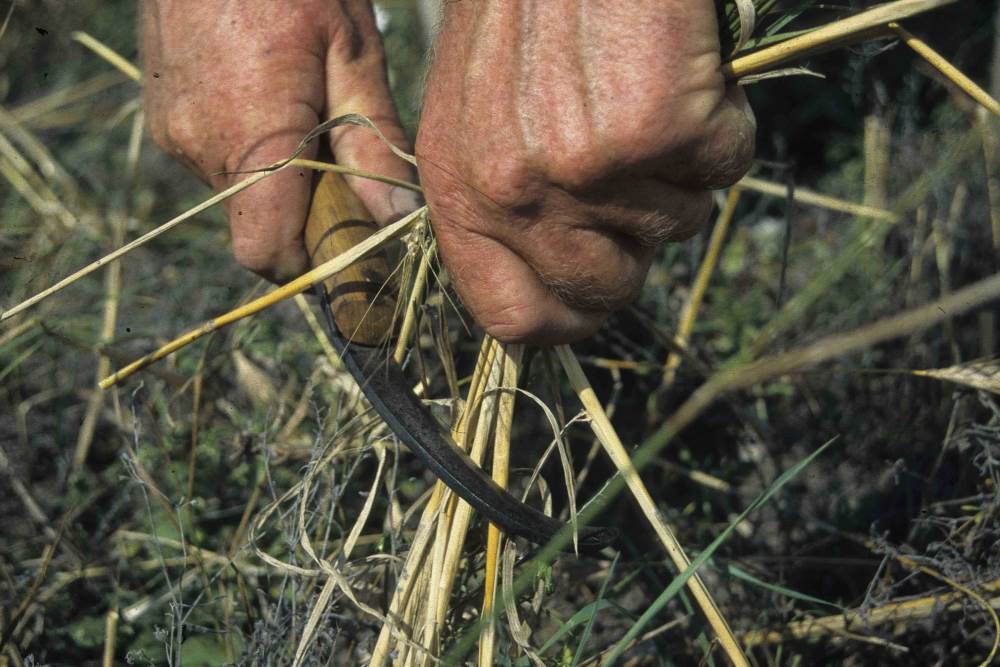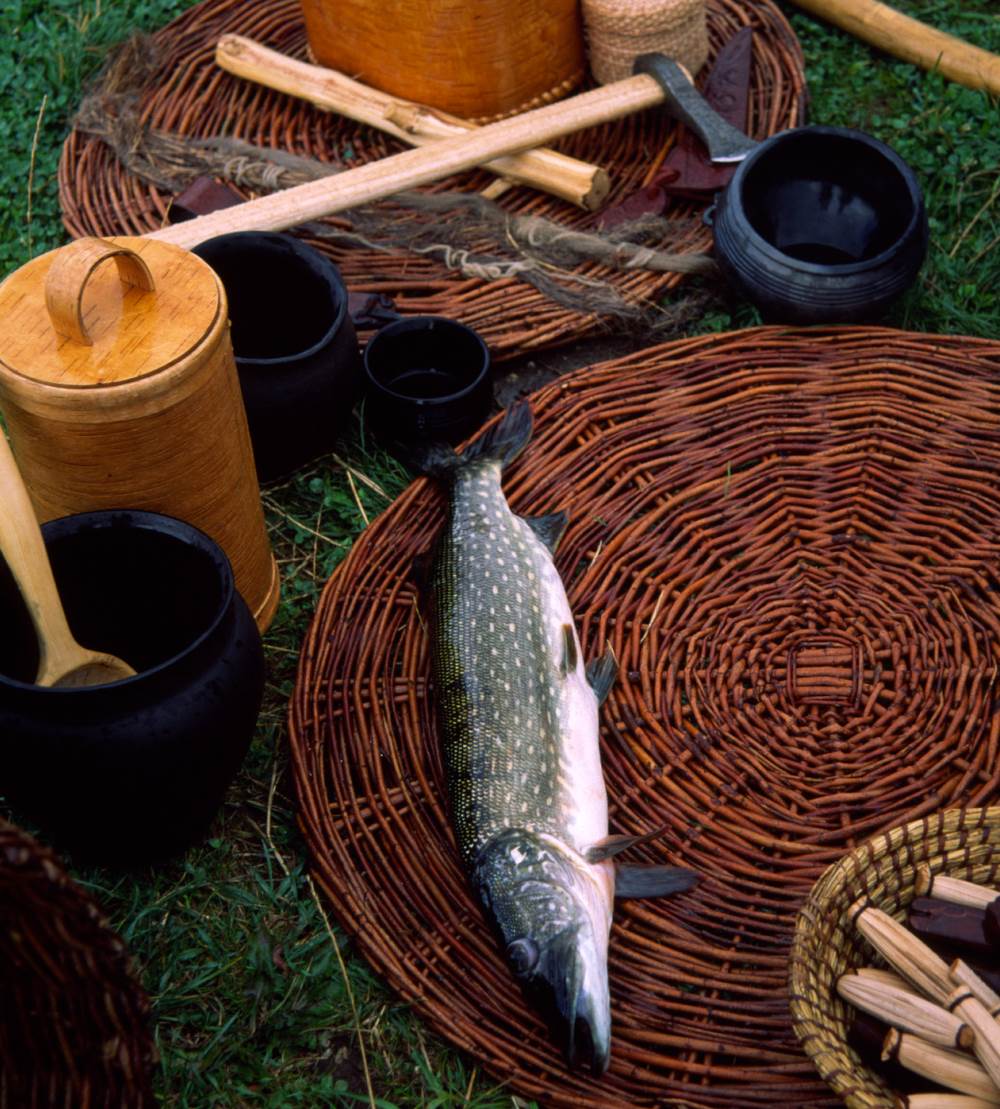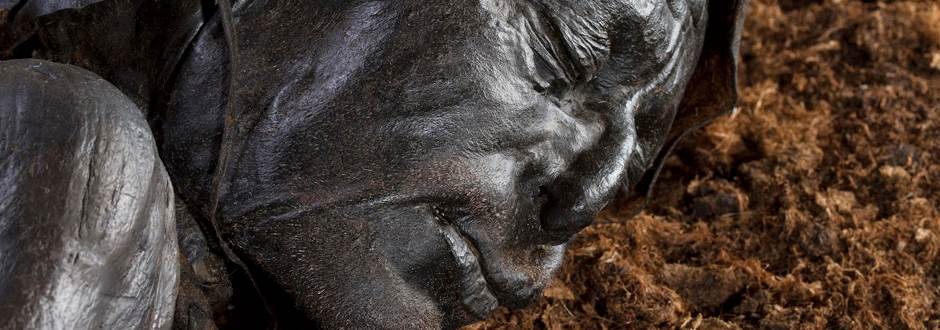What people ate
Cooking in the Iron Age was, among other things, done in earthenware vessels over the open fire pit in the house. In cellars underneath the iron-age houses, we have found supplies of harvested grain, and we know that Tollund Man’s last meal was a porridge that consisted of barley, flaxseed, and seeds from knotweed, Gold-of-pleasure, oat and more. From the last meals of Tollund Man and Grauballe Man, we know that a wide range of weed seeds were consumed in the Iron Age; shepherd’s purse, common plantain and several other species were also mixed in with the porridge.
At the beginning of the Iron Age, people grinded flour with a rubbing stone. Most was most likely used for porridge, while it is more uncertain if bread was baked as well. In the centuries following the birth of Christ, the rubbing stone was replaced by a more modern rotating mill, as seen used by the Roman army.

Wild berries such as raspberries and blueberries as well as apples were gathered and eaten. Hazelnuts were probably a good supplement to the average diet.
If people lived by the sea, they would have been able to fish as well as collecting mussels and oysters along the coast. By the lakes inland people probably made use of fish weirs and fish traps, which did not need a lot of care but could still provide the people of the Iron Age with plenty of fish.

Livestock was imperative in the economy of the Iron-age people and besides milk and meat also provided raw materials in the form of wool, skin, bones and horn. The butchering took place spring and autumn. Any meat that was not eaten right away was dried or smoked and saved for the winter.
Milk was either used right away or made into cheese that could be saved for later. Earthenware vessels, which could be used for making cheese – straining vats – are among the things the archeologists discover in excavations.
People hunted game or caught in traps. The preferred game was wild boar and deer but also swans, ducks and geese were hunted and used for food. The big birds of prey were also hunted but in their case, their tail feathers made them desirable as they could be used for arrows.







Follow us here: